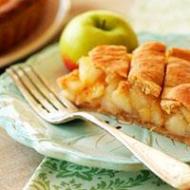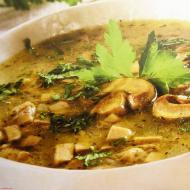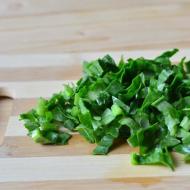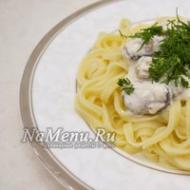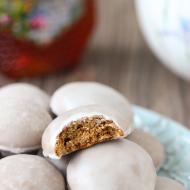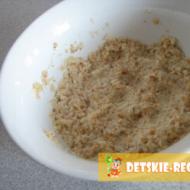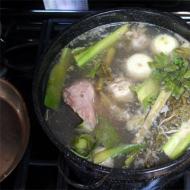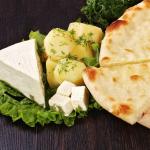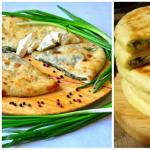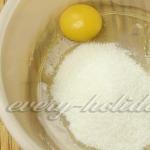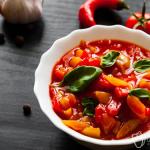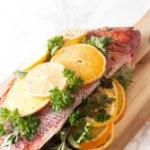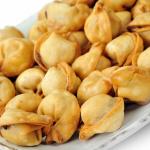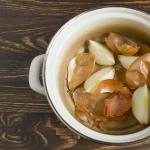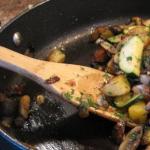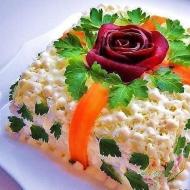
03 are carried out in a test form using the program MyTestXPro. Skills and knowledge are the subject of assessment of the development of the MDK. The MDK.01 exam and differentiated tests for MDK.02 and MDK.01.03 are conducted in a test form using the MyTestXPro program.
Differentiated test
by profession "Master in Digital Information Processing"
Compiled by: teacher
Informatics
Shorkina A.A.
s.B.Kaibitsy
Intermediate certificationaccording to MDK.01.01 "Technologies for the creation and processing of digital multimedia information"is carried out in the form of a differentiated test in writing by performing a test of the second level - the reproduction of previously learned information from memory from a literal copy to application in typical situations.
The differentiated test according to MDK.01.01 "Technologies for creating and processing digital multimedia information" in the profession "Master in digital information processing" was compiled on the basis of the federal state educational standard for primary vocational education in the profession 230103.02 Master in digital information processing (order of the Ministry of Education and Science of Education of the Russian Federation dated April 16, 2010 No. 365). The tests fully reflect the federal component of the state standard.
The content of the differentiated test was developed according to the main topics according to MDK.01.01 "Technologies for creating and processing digital multimedia information", combined into the following thematic sections: "Using PC hardware and software", "Inputting and processing digital information", "Using network resources for input and processing of digital information” and covers the most significant material in them. The test has the following structure: each question contains a certain number of answers, where they need to be revealed.
The main purpose of this section of the differentiated test is to check the knowledge of students in an interdisciplinary course:device of personal computers, main blocks, functions and technical characteristics; architecture, composition, functions and classification of personal computer operating systems; types and purpose of peripheral devices, their device and principle of operation, connection interfaces and operating rules; principles of installation and configuration of the main components of the operating system and peripheral equipment drivers; principles of digital representation of sound, graphic, video and multimedia information in a personal computer; types and parameters of audio, graphic, video and multimedia file formats and methods of their conversion; purpose, capabilities, rules for the operation of multimedia equipment; main types of interfaces for connecting multimedia equipment; basic techniques for processing digital information; purpose, varieties and functionality of sound processing programs; purpose, varieties and functionality of graphic image processing programs; purpose, varieties and functionality of video and multimedia content processing programs; structure, types of information resources and main types of services on the Internet; purpose, varieties and functionality of programs for creating web pages; regulatory documents on labor protection when working with a personal computer, peripheral.
Individual educational achievements are assessed in accordance with the universal scale (table).
Percentage of effectiveness (correct answers) | Qualitative assessment of individual educational achievements | |
score (mark) | verbal counterpart |
|
90 ÷ 100 | Great |
|
75 ÷ 89 | Fine |
|
50 ÷ 74 | satisfactorily |
|
less than 50 | not satisfactory |
To measure the degree of correctness, use the formula K \u003d P1 / P2,
Where P1 is the number of correctly performed essential operations in the test;
P2 is the total number of significant operations in the test.
Answers are included with the test.
Test questions
- Operations on P5 files
2. The text of the text editor document contains the following elements P5
3. Some service symbols Р4
4. Symbols are... P5
6. Data types in MS Excel P3
7. Basic types of links to cell addresses P2
8. Numbers in Excel spreadsheets can be written in P2 format
9. Types of P3 databases
14. Types of software by the duration of stay in the RAM P2
15. Utilities P=9
doc ,txt P=3
21. File extension pdf reads programs R=3
23. Types of P2 monitors
33. Windows 9x P3 family
34. Windows NT P 17 family
37. Type of information P5
Application
Answers to the test
- Operations on P5 files
- copying
- moving
- Removal
- Renaming
- Cutting
- The text of a text editor document contains the following P5 elements
- Symbol
- Word
- Offer
- Line
- Paragraph
- Some service characters P4
- Space
- Dot
- Comma
- Hyphen
4. Symbols are... P5
- Letters
- Numbers
- spaces
- Punctuation marks
- Special symbols
5. Among the main properties of symbols, the following can be distinguished P4
- Font
- Size
- inscription
- Color.
- Data types in MS Excel P3
- Number
- Text
- Formula
- Basic types of references to P2 cell addresses
- Absolute
- relative
- Numbers in Excel spreadsheets can be written in P2 format
- regular number
- Exponential Format
9. Types of P3 databases
- Tabular
- Hierarchical
- Network
10. P3 software classification
- System software
- Application software
- programming toolkit
11. System software includes P6 programs
- OS
- Shell Programs
- Antivirus programs
- Programs - diagnostics
- Disk Maintenance Programs
- Archivers
12. Application software includes P11 programs
- Word processors
- Table processors
- DBMS
- Computer graphics and animation
- Presentation tools
- Communication media
- Computer-Aided Design Systems
- Production automation tools
- Desktop publishing systems
- Tutorials
- Games
13. Tool software P4
- Translators
- Debuggers
- Application IDEs
- Application Languages
14. Types of software by the duration of being in RAM
- Residential
- Non-resident
15. Utilities P=9
- Data archiving
- System Restore
- Disk Defragmenter
- File and Settings Transfer Wizard
- Scheduled tasks
- Disk Cleanup
- System Information
- symbol table
- Security Center
16. The normal scheme for booting the OS is as follows: P \u003d 3
- BIOS (ROM) - basic input and output system
- ZOS (disk) - operating system loader
- Operating system (disk)
17. Windows multimedia programs P=5
- Volume control
- Universal Player (Media Player)
- laser player
- Windows Media Player
- Audio Editor Sound Recorder
18. Windows startup modes based on NT technology (F8 key) Р=7
- Enable boot logging
- Safe mode
- Enable VGA mode
- Loading Last Known Good Configuration
- Safe mode with command line support
- Safe Mode with Network Driver Loading
19. The operating system includes the following modules Р=6
- File system management
- command processor
- Device drivers
- GUI
- Service programs
- Reference system.
20. Sample applications that open files with these extensions doc ,txt P=3
- MS Word
- word pad
- Notebook
21. File extension pdf reads programs R=3
- Foxit Reader
- Adobe Reader
- Acrobat Reader
22. The file containing the program - an executable file, has the extension P = 2
23. Types of P2 monitors
- Based on a cathode ray tube
- LCD monitors
24. Diagonal screen size P5
- 14 inch
- 15 inch
- 17 inch
- 19 inch
- 20 inch
25. P13 motherboard devices
1. Connection connector for add. food
2. Main power connector
3. Chipset northbridge
4. Slots for connecting memory modules
5 FDD connector
6.HDD connector
7. Chipset southbridge
8. Battery power
9. Connectors for indicators and case buttons
10. PCI device slots
11 CD-ROM audio output connector
12. AGP slot for graphics card
13. Peripheral Ports
26. What is the P6 PC processor made of
- Address and Data Buses
- Arithmetic logic unit
- Registers
- Cache (small fast memory 8-512 KB)
- Command counters
- Math coprocessor
27. Characteristics of P5 video cards
- RAM
- Type of memory used
- Graphics chip and memory frequency
- Bus bit width
- Support for hardware texture smoothing and game special effects
28. Devices of the P14 system unit
1. Motherboard
2.Processor
3.Processor
4. RAM
5. Hard drive
6. Video card
7. Sound card
8. Network card
9. CD/DVD-ROM
10. Coolers
11. Radiators
12. Power supply
13. FDD drive
14. Ports
29. Differences between local networks and global networks Р=8
- The length, quality and method of laying communication lines.
- Complexity of transmission methods and equipment
- Communication speed
- Variety of services
- Prompt execution of requests
- Channel separation
- Using the Packet Switching Method
- Scalability.
30. Local computer networks are classified according to their purpose Р=4
- Terminal service networks
- Networks on the basis of which the production management systems of the institutional
activities.
- Networks that connect design automation systems.
- Networks on the basis of which distribution computing systems are built.
31. The most common operating systems P8
- RT-II (Real time system - Real time system)
- SR/M ( Control Program for Microcomputer- Control program for microcomputers).
- MSX-DOS.
- MS DOS ( MicroSoft Disk Operation System- Microsoft Disk Operating System).
- Microsoft Windows
- OS/2 (Operation System).
- Apple System (Apple operating system).
- UNIX.
32. Graphical interfaces and extensions for DOS P6
- Windows 1.0
- Windows 2.0
- Windows 2.1
- Windows 3.0
- Windows 3.1
- Windows for Workgroups(Windows for Workgroups) 3.1/3.11
33. Windows 9x P3 family
- Windows 95
- Windows 98
- Windows Me
34. Windows NT P17 family
- Windows NT 3.1
- Windows NT 3.5
- Windows NT 3.51
- Windows NT 4.0
- Windows 2000 (NT 5.0)
- Windows XP (NT 5.1)
- Windows XP-bit Edition (NT 5.2)
- Windows Server 2003 (NT 5.2)
- Windows Vista (NT6.0)
- Windows Home Server (NT 5.2)
- Windows Server 2008 (NT 6.0)
- Windows Small Business Server (NT 6.0)
- Windows 7 (NT 6.1)
- Windows Server 2008 R2 (NT 6.1)
- Windows Home Server 2011 (NT 6.1)
- Windows 8 (NT 6.2)
- Windows Server 8 (NT 6.2)
35. Input devices P9
- Keyboard
- Mouse manipulator
- trackball
- touchpad
- Microphone
- Scanner
- Digital camera
- Digital video camera
- Joystick
36. Information output devices P4
- Display
- Printer
- Plotter
- Acoustic speakers
37. Type of information P5
- Numeric
- Text
- Graphic
- Sound
- Video
38. Service keys include P13
- Enter
- cap lock
- Shift
- Page Up
- Page Down
- backspace
- Delete
- Insert
- Home
- PrintScreen
39. Traditional classes of P4 keys
1. Alphabetic and digital block.
2. Keys of a service nature that control data entry.
3. Function keys (F1 to F12) that allow you to control the currently active application.
4. Dual-mode keys, which can perform the functions of the first group or the second group by switching to another function button.
40. Multimedia technology allows you to simultaneously use different ways of presenting information P6
- Number
- Text
- Graphic arts
- Animation
- Video
- Sound
41. Graphic editors can be divided into categories: P2
- Raster
- Vector
42. Some raster graphics editors P4
- Paint
- Adobe Photoshop
- CorelPhoto-Paint.
- GIMP
43. Some P3 vector graphics editors
- Graphic editor built into Word text editor
- CorelDRAW
- Adobe Illustrator
44. Tools for creating and editing graphic images P16
- Line
- Curve
- Rectangle
- Polygon
- rounded rectangle
- Ellipse
- Inscription
- Spray
- Brush
10. Pencil
11. Scale
12. Choice of colors
13. Fill
14. Eraser
15. Highlight
16. Selection of an arbitrary area
45. Classification of P3 scanners
- Manual view of scanners
- Flatbed view of scanners
- Stretch view of scanners
46. The scanner is capable of performing two types of operations P2
- Scan images
- Scan text for further recognition
Differentiated test (test) by discipline
MDK 02.01Organization of works on installation, repair and adjustment of systems
automation, measuring instruments and mechatronic systems
by specialty 220703.51 Automation of technological processes and production
Option 1
n\n
Test
Answer
Insert missing word
functional
Insert missing word
external postings
Insert missing word
designing
Choose the correct answer
Choose the correct answer
A) outline
B) communication lines
Choose the correct answer
A) automation scheme
B) custom specifications
B) block diagrams
Choose the correct answer
A) to scale
B) not to scale
Choose the correct answer
Thermal relays serve
Choose the correct answer
A) bimetallic plate
B) fusible link
B) contact
Choose the correct answer
A) Cork
B) universal
B) threaded
D) tubular
A, B, D
Choose the correct answer
The main characteristic of the relay
A) dynamic
B) static
Choose the correct answer
Name the types of contacts
A) point
B) gear
B) linear
D) planar
A, B, D
Choose the correct answer
B) thermal relay
B) push-button post
A B C
Choose the correct answer
Insert missing word
contactors
Insert missing word
knife switch
1. Strain gauge
2.Electromagnetic
3.Piezometric
4. Capacitive
1-B
2-G
3-A
4-B
1. AR A) Cords
3.A16 B) Mounting wires
1-G
2-B
3-B
4-A
1-B
2-B
3-G
4-A
Choose the correct answer
Purpose of shields
A, B
1. VVG A) Control
2. KSPV B) Power
3. AKVBbShv V) Communication cable
1-B
2-B
3-A
Choose the correct answer
C) Sensor sensitivity
E) Sensor inertia
B,C,D,D
Option 2
n\n
Test
Answer
Choose the correct answer
Schematic diagrams serve
A) to draw up connection diagrams
B) for the development of pipe wiring diagrams
C) for drawing up specification diagrams
Choose the correct answer
By design, fuses are
A) Cork
B) universal
B) threaded
D) tubular
A, B, D
Insert missing word
The process, which consists in obtaining and converting the initial description of objects into the final description based on the implementation of a set of research, calculation and design works, is called ....
designing
Choose the correct answer
Thermal relays serve
A) to protect electrical receivers from overloads and short circuit currents
B) from prolonged overload (for protecting electric motors)
Choose the correct answer
The connection of devices on the automation functional diagram with central control devices is shown using
A) outline
B) communication lines
Insert missing word
Electromagnetic automatic devices designed for automatic and remote control of electrical circuits of direct and alternating current with voltage up to 1000V are called .......
contactors
Insert missing word
A document that defines the structure and nature of process automation is called ………… scheme
functional
Choose the correct answer
The scheme of external wiring is performed
A) to scale
B) not to scale
Choose the correct answer
Heating element thermal relays
A) bimetallic plate
B) fusible link
B) contact
Choose the correct answer
Purpose of shields
A) Centralization of means of control and regulation
B) to draw up connection diagrams
C) serve as a supporting structure for the installation of devices
A, B
11.
Insert missing word
A diagram reflecting electrical and pipe connections between devices and automation equipment is called a diagram ......
external postings
Choose the correct answer
The magnetic starter consists of
A) AC contactor
B) thermal relay
B) push-button post
D) DC contactor
A B C
Choose the correct answer
The main characteristic of the relay
A) dynamic
B) static
Choose the correct answer
What is the source material for drawing up fundamental pneumatic and electrical circuits
A) automation scheme
B) custom specifications
B) block diagrams
Insert missing word
Switching devices designed for non-automatic closing and opening of AC and DC power circuits with voltage up to 500V and current up to 5000A, and has 1-3 poles are called ......
knife switch
Choose the correct answer
Name the metrological characteristics of the sensor
A) Dynamic response of the sensor
B) Static characteristic of the sensor
C) Sensor sensitivity
D) Sensor sensitivity threshold
E) Sensor inertia
B,C,D,D
Choose the correct answer
Control buttons are designed
A) for automatic control of AC and DC electrical circuits
B) for the operator to submit a control action to the automation system
Establish a correspondence between the types of pipe wiring and their purpose
1. Pulse A) for the supply and removal of coolant
2. Command B) connecting selective devices with a sensitive element
3. Feeding B) interconnecting individual functional blocks
4. Heating D) connecting sources of additional energy with elements of automation systems
1-B
2-B
3-G
4-A
Match the name of the electrical sensor and its purpose
1. Strain gauge A) the operation of such sensors is based on the piezoelectric effect (direct, reverse). When a crystal is compressed, charges of different signs are formed on its walls
2.Electromagnetic B) convert the measured value into capacitance.
3.Piezometric IN). their work is based on the change in the active resistance of the material during its mechanical deformation. Semiconductors or conductors are used as materials
4. Capacitive D) are designed to convert movement into an electrical signal by changing the parameters of the electromagnetic circuit
1-B
2-G
3-A
4-B
Choose the correct answer
Name the types of contacts
A) point
B) gear
B) linear
D) planar
A, B, D
Match the type of cable and its brand
1. VVG A) Control
2. KSPV B) Power
3. AKVBbShv V) Communication cable
1-B
2-B
3-A
Establish a correspondence between the brand of wire and its type
1. AR A) Cords
2. MKSH B) Bare wires
3.A16 B) Mounting wires
4. ShR D) Installation wires
1-G
2-B
3-B
4-A
Differentiated offset
according to MDK. 02.01 "Technologies for publishing digital multimedia information"
by profession " Master on digital information processing"
Compiled by: teacher of computer science Gimranova E.Yu.
Intermediate certificationByMDK.02.01. "Technologies for publishing digital multimedia information" is carried out in the form of a differentiated test in writing by performing a second level test - reproducing previously learned information from memory from a literal copy to application in typical situations.Differentiated credit tests forby profession “Master in digital information processing” are compiled on the basis of the federal state educational standard for primary vocational education by profession 230103.02 Master in digital information processing (order of the Ministry of Education and Science of Education of the Russian Federation dated April 16, 2010 No. 365). The tests fully reflect the federal component of the state standard.
The content of the differentiated test is developed according to the main topics inMDK.02.01. "Technologies for publishing digital multimedia information", combined into the following thematic sections: “Formation of a media library for structured storage and cataloging of digital information”, “Managing the placement of digital information on PC disks, disk storages of a local and global network” and covers the most significant material in them.
The main purpose of this section of the differentiated test is to check the knowledge of students in an interdisciplinary course:principles of building computer networks; protocols and technologies for data transmission in networks; principles of creating multimedia products and using multimedia technologies; classification, models of routers and their features, differences from modems and communicators; to increase the level of protection, taking into account the development of mathematical and software computing systems; use archiving as a means of protecting information
The differentiated test consists of 2 options, in each option there are 2 parts of the task:
Part A. -multiple choice task
Part B. - Task with a detailed answer
Allotted for work2 hours.
Individual educational achievements are assessed in accordance with the universal scale (table).
Percentage of effectiveness (correct answers)
Qualitative assessment of individual educational achievements
score (mark)
verbal counterpart
90 ÷ 100
Great
75 ÷ 89
Fine
50 ÷ 74
satisfactorily
less than 50
not satisfactory
Option 1.
Part A.
1. Programs according to their legal status can be divided into three large groups
Licensed, shareware, free software
Shareware, free software
Free software, licensed, personal
2. Biometric information security systems include
speech recognition systems, fingerprint identification systems, iris identification systems
passwords, user identification
fingerprint identification systems, auditors
iris identification systems, stealth viruses
3. Types of anti-virus programs that differ in their functions
auditors, simple file viruses
detectors, auditors, watchmen, phages, vaccines
watchman phages
4. Stamped DVDs have the following modifications
DVD5 is a single-sided, single-layer disc with a capacity of 4.7 GB, DVD4 is a single-sided, single-layer disc with a capacity of 4.7 GB
DVD9 - 8.5 GB single-sided double layer disc, DVD5 - 4.7 GB single-sided single layer disc DVD10 - 9.4 GB double-sided single layer disc, DVD18 - 17 GB double-sided double layer disc
DVD22 - double-sided double-layer disc with a capacity of 17 GB
5.Writable discs
CD-R, DVD-RW
DVD-R, CD-R
DVD-RW, DVD-R
6.Types of printers
dot matrix printers, inkjet printers, polygraphic printers
inkjet printers
dot matrix printers, inkjet printers, laser printers
laser printers, machine printers
7. Types of modems
external, connected to a com port or usb port, internal, connected to a pci connector on the PC motherboard.
internal, plugged into the pci-socket on the PC motherboard, external
8. According to the territorial distribution of the network can be:
local, hierarchical, global
local, regional, global
global, network
9. Internet services.
FTP file transfer, Archie file search, e-mail, newsgroups
searching for files using the archie system, creating a web page, listening to music
email, create a web page, listen to music
10.Types of top-level domains
administrative, physical
administrative, geographic
11. Names of some geographic top-level domains
de, jp,ru, us, ca
jp,com, org
ru, edu, ca
12. An email address has two parts
username and password
username and servername
server_name and login
13. Some ISPs
Demos, Yandex
Demos, Relcom, Rinet, Russia Online
Rinet, Rambler, Yandex
14. As hypertext links, you can use ...
word, group of words picture
group of words, music
picture, track
15. Transmit/receive devices
network card, external modem
network card, modem
external modem, motherboard
16. Networks are distinguished by belonging
departmental, government
state, international
17. According to the type of transmission medium, they are divided into networks
on twisted pair, coaxial, bundled, with information transmission over radio channels
coaxial, twisted pair, fiber optic, with information transmission over radio channels, in the infrared range
with information transmission over radio channels, on twisted pair, coaxial, bundled
18. Connecting disks in a peer-to-peer network.
RMB on Network Places, register or use Browse to find the desired folder, click OK.
Right-click on Network Neighborhood, click Map Network Drive. The Map Network Drive dialog box opens. In the Folder tab, enter or use Browse to find the desired folder, click OK, as a result, an icon will appear in the My Computer window.
19. After installing the network card, setting up Windows XP to work on a local network.
Control Panel - Network Connection Properties - IP Address Assignment.
Start - Control Panel - Control Panel - Network Connections - Network Connection Properties - Internet Protocol TCP/IP - IP Assignment.
21. Opening an archive without unpacking
Find the archive in the working area of the archiver window. Reveal it. Specify the names of the files included in the archive, open with a double click of the mouse or press the Enter key.
Find the archive in the working area of the archiver window. Open it by double-clicking and pressing the Enter key. Specify the names of the files included in the archive, open with a double click of the mouse or press the Enter key.
22. Rename files and folders using Explorer (any way)
Find the file (folder) you want to rename in the right pane of the explorer window. Select the Rename command. Enter a new file (folder) name. Press Enter.
Find the file (folder) you want to rename in the right pane of the explorer window. Call the context menu of the file (folder) that we want to rename or execute the File command on the menu bar. Select the Rename command. Enter a new file (folder) name. Press Enter.
23. Folder window structure
Title bar. The working area of the window. Information panel. Tire
Title bar. Minimize button (on the taskbar). Expand button. Close button. Roll into the window. Menu Bar. Toolbar. Address line. The working area of the window.
The working area of the window. Minimize button (on the taskbar). Tire. Close button. Expand button. Menu Bar.
24. Basic typing rules
Fingers on the keys should jump clearly, abruptly, easily and without the slightest pressure. Type with index fingers. Fingers should not bend when hitting the keys.
The force of impact on the keys should be uniform and the same regardless of their location. Type with index fingers. Type smoothly with one hand.
Fingers on the keys should jump clearly, abruptly, easily and without the slightest pressure. The beats must be different. The finger after hitting the keys in the main position should return to its main place. Fingers should not bend when hitting the keys. Non-participating fingers should not rise from their places.
25. Uninstall the previously installed application.
Click the Change/Remove programs icon. Install or Remove Programs. Click the Change/Remove button. Supervise the removal process, if necessary.
Select Start/ Control Panel/ Add or Remove Programs. Click the Change/Remove programs icon. Select the program to be removed from the list. Click the Change/Remove button. Supervise the removal process, if necessary.
26. Creating a file using the operating system.
Select the Create command and then a command from the proposed list. Select the RMB button on an empty space in the working area of the folder window. Enter the file name and press Enter.
Find the folder in which we want to create a file and open its window by double-clicking on the icon. At the same time, we will see its contents in the folder window. Select the RMB button on an empty space in the working area of the folder window. Select the Create command and then a command from the proposed list. Enter the file name and press Enter.
27. Stages of turning off the computer.
From the main menu, select Shutdown (Shutdown). Start. In the dialog box, select Disable. After turning off the entire computer, turn off the monitor.
Turn off the entire computer, turn off the monitor. From the main menu, select Shutdown (Shutdown).
Start. From the main menu, select Shutdown (Shutdown). In the dialog box, select Disable. After turning off the entire computer, turn off the monitor.
28. Reproduction of audio and video information needed on computer disks.
You can control playback using the Stop, Previous track, Next track buttons. Find the file of interest in the folder. Run it for execution by double-clicking or clicking on the Play button. You can control playback using the Stop, Previous track, Next track buttons.
Select the desired folder in the program window, on the Multimedia Library tab. Pay attention to the fact that all information is sorted into folders Album, Artist, Genre. Find the file of interest in the folder. Run it for execution by double-clicking or clicking on the Play button. You can control playback using the Stop, Previous track, Next track buttons.
29. Delete files from the archive.
Find and open the archive in the workspace of the archiver. Choose a file name. Click RMB. Confirm deletion.
Find and open the archive in the workspace of the archiver. Choose a file name. Call the context menu of the file and the delete command. Confirm deletion.
30. Browser is
technical device
computer detail
web page creation program
web browser
31. The global computer network is
hyperlinked information system
a group of computers connected by information transmission channels and located within the building
organization local area network system
a collection of local networks and computers located at great distances and connected into a single system
32. A network in which each user decides the issue of access to his files is called
dedicated host network
corporate computer network
peer-to-peer computer network
33. Modem provides
converting a binary code into a signal transmitted by telephone and vice versa
converting a binary code into a signal transmitted by telephone
converting a telephone signal into binary code
binary signal amplification
34. WWW.yandex.ru is
browser
search system
Homepage
35. Modem is
mail program
network protocol
Internet server
technical device
Part B.
Finish the sentence
A virtual museum is a type of website….
E-government provides….
Multimedia is...
Differentiated offset
according to MDK 02.01. Digital Media Publishing Technology
Option 2.
Part A.
1. To protect against unauthorized access to information more and more often
are used
passwords, user identifications, biometric authorization systems
biometric authorization systems, watchman,
encrypted and polymorphic viruses
passwords, user identification, watchman
2. By habitat, viruses are divided into ...
network, simple file viruses
file boot boot macro viruses network
boot, watchman
macroviruses, vaccines
3.Types of file viruses
simple file viruses, complex viruses
encrypted and polymorphic viruses, simple file viruses, stealth viruses
stealth viruses
4.Rewritable discs
CD-RW, CD-R
DVD+RW CD-RW, DVD-RW
DVD-RW, CD-R
5.Printer Specifications
resolution is reflected in dots per inch (dpi), print speed, cost of printing and consumables
print speed, speed
cost of printing and consumables, beauty
6.Paper feed types
vertical feed, paper is inserted from above; horizontal feed, paper is stacked on a special tray at the bottom
horizontal feed. paper is stacked on a special tray at the bottom, top, paper is fed from below
7. According to the speed of information transfer, computer networks are divided into:
Low speed, Medium speed, High speed
medium speed
high speed
8. Common search engines
http:// yandex.ru (Russian), http:// rambler.ru (Russian), http:// google.com (international)
http:// teoma.com (international), http://wikipedia. en
9. Names of some administrative top-level domains
corn, edu, gov, net, org
edu,com, ru
com, ru,gov
10.Equivalent Internet address formats
IP - address, DNS - address
DNS - address,www
11. The following information systems operate on the Internet
WWW(World Wide Web) World Wide Web, Gopher-system, FTP(File Transfer Protocol) - system for transferring files
gopher system,www
FTP(File Transfer Protocol) - system for transferring files, IP - address
12. Mail servers
For incoming (POP3 or IMAP), for outgoing
For outgoing, SMTP
13. Physical transmission medium in the local network.
required bandwidth, network transmission speed, network size, required set of services (data, voice, multimedia, etc.) that need to be organized.
Network size, cable length, Total cost of the project, including purchase of equipment, installation and operation.
Noise and interference immunity requirements, cable length
14. Local network topology
star, tire, wheel
common bus, star, ring, tree
ring, network, wheel
15. Types of local network
client/server networks, peer-to-peer networks
peer-to-peer networks, common bus topology
16. What is needed to build a local network.
Network cable, Network cards, Switch.
Network cards, processor, switch.
Switch, coaxial cable
17. Setting printer sharing and security measures.
Start - Settings - Printers - Settings - Printers - Select the printer you want to share. In the File menu, select the Access command - Select the Sharing radio button - In the Network name field, instead of the default one, you can enter a new printer name - To save all changes, click Apply, then OK.
Settings - Select the "Sharing" radio button - Select the printer that we want to share. In the File menu, select the command Access - To save all changes, click Apply, then OK.
18. The whole variety of computer networks can be classified according to a group of features
Territorial distribution, Departmental affiliation. Information transfer rate. Types of information environment.
19. Creating an archive
In the workspace of the archiver window, find and select the file or files that you want to move to the archive. Specify the compression method. Press OK. Specify the compression method. Press OK.
Select the Add button on the toolbar. In the dialog box that appears, use the Browse button to specify the folder in which you want to create the archive and give the archive a name.
In the workspace of the archiver window, find and select the file or files that you want to move to the archive. Select the Add button on the toolbar. In the dialog box that appears, use the Browse button to specify the folder in which you want to create the archive and give the archive a name. Specify the compression method. Specify the compression method. Press OK.
20. Perform file system defragmentation
Execute the start command. All programs. Standard. Service. Disk Defragmenter. In the Disk Defragmentation dialog box, select the disk you want to defragment and click the Defragmentation button. Monitor the defragmentation process. It will be displayed visually in special fields of the dialog box. At the end of the process, click on the button Output report and examine it.
All programs. In the Disk Defragmentation dialog box, select the disk you want to defragment and click the Defragmentation button. At the end of the process, click on the button Output report and examine it. Monitor the defragmentation process. It will be displayed visually in special fields of the dialog box.
21. Create a new folder using the OS (any way)
Open the window of the folder in which we want to create a new one by double-clicking on the icon. The folder window will open and we will see its contents. Call the RMB context menu on a free space in the workspace of the folder window. Select the New command, and then the Folder command. The folder will then be created under the name New Folder. Enter a folder name and press Enter.
Call the RMB context menu on a free space in the workspace of the folder window. The folder will then be created under the name New Folder. Select the New command, and then the Folder command. Enter a folder name and press Enter.
22. Install new applications.
Click the Install Software icon. Follow the installation wizard instructions. Pay attention to the terms of the license agreement during the installation process; availability of the necessary free disk space; folder where the program will be installed;
Select Start / Control Panel / Add or Remove Programs. Click the Install Software icon. Select the distribution kit media CD or floppy disk. Follow the installation wizard instructions. Pay attention to the terms of the license agreement during the installation process; availability of the necessary free disk space; folder where the program will be installed;
23. Finding information about the system
System Tools / Accessories / System Information / All Programs / Explore the contents of the dialog box and find information of interest.
Run the command Start / All Programs / Accessories / System Tools / System Information. Explore the contents of the dialog box and find information of interest.
24. Structure and elements.
command buttons. Drop-down list. Tabs. Text field. Tops
Title bar. Tabs. Tab boxes. Checkboxes. Text field. Drop-down list. Counter. command buttons.
Drop-down list. Tab boxes. Tops. Text field. Counter.
25. Create a new folder using the Explorer program.
In the left pane of the Explorer window, find the folder in which we are creating a new one and open it by double-clicking on the icon. The contents of the folder will be displayed in the right pane of the window. New/ This will create a new folder. Enter a folder name and press Enter.
In the left pane of the Explorer window, find the folder in which we are creating a new one and open it by double-clicking on the icon. The contents of the folder will be displayed in the right pane of the window. Run the command File / Create / Folder. This will create a new folder. Enter a folder name and press Enter.
Run the command File / Create / Folder. Enter a folder name and press Enter.
26. Check disks.
In the Check disk dialog box, check the boxes Automatically fix system errors, Check and Repair sectors. In the Properties dialog box, select the Tools tab. Call the disk context menu and select the Properties command. At the end of the check, study the reporting table.
In the My Computer folder, select the disk to be checked. Call the disk context menu and select the Properties command. In the Properties dialog box, select the Tools tab. On the Tools tab, click the Run Test button. In the Check disk dialog box, check the boxes Automatically fix system errors, Check and Repair sectors. At the end of the check, study the reporting table.
27. Taking control of the mouse.
Hangup. Click. Double click. Right click. Drag and drop. Stretching. Special Drag. overshoot
Hangup. Click. Double click. Right click. Drag and drop. Stretching. Special Drag.
Double click. Right click. Drag and drop. Stretching. Special Drag. overshoot. Click.
28. Graphic file formats
BMP, TIFF, GIF, PNG, EPS, XCL, JPEG
BMP, TIFF, GIF, PNG, EPS, CDR, JPEG
BMP, DOC, GIF, PNG, PPT, CDR, JPEG
BMP, TIFF, GIF, PNG, PPT, CDR, JPEG
29. Searching for information on the Internet using keywords involves
entering a word (phrase) in the search bar
entering a word (phrase) into the address bar
30. Internet e-mail address is set: usern [email protected]. What is the name of the owner of this email address?
ru;
mtu-net.ru
username
mtu-net
31. Postal address includes
username and password
server name and password
username, server name, password
username and server name
32. Login is
server name
mailbox access password
username in postal address entry
mailing address.
33. Hypertext is
very large text
text that can be clicked on highlighted links
text on web pages
text highlighted with underline and color
34. Email allows you to send
only messages
only files
messages and attachments
video image
35. A group of computers connected by information transmission channels and located within the building is called
global computer network
hyperlinked information system
local computer network
Part B.
Finish the sentence
The biggest encyclopedia....
Information on the Internet is distributed according to special ......
ProtocolFTPallows….
Answers:
1 option.
Part A.
A
B
B
B
A
IN
A
B
B
B
B
G
IN
IN
B
G
B
A
B
A
IN
A
IN
A
A
B
B
B
B
Internet-technologies offer a solution to such traditional museum problems as storage, security, providing wide, quick and easy access to exhibits. Unlike simple photo collections, a virtual museum is characterized by such features as the presence of a virtual tour and advanced search capabilities for finding and classifying exhibits.
e-government provides information and the provision of an already formed set of public services to citizens, businesses, other branches of government and government officials, in which personal interaction between the state and the applicant is minimized and information technologies are used as much as possible. E-government is not a complement or analogue of traditional government, but only defines a new way of interaction based on the active use of information and communication technologies (ICT) in order to improve the efficiency of public service delivery
Multimedia is the interaction of visual and sound information under the control of interactive software using modern technical and software tools, they combine text, sound, graphics, photos, videos in one digital representation. For example, a single container object may contain textual, audio, graphical, and video information, as well as, possibly, a way to interactively interact with it. The term multimedia is also often used to refer to storage media that allow you to store significant amounts of data and provide fairly quick access to them (the first media of this type were CD - compact disk). In this case, the term multimedia means that a computer can use such media and provide information to the user through all possible types of data, such as audio, video, animation, image, and others, in addition to traditional ways of providing information, such as text.
Option 2.
Part A.
A
B
IN
B
B
A
A
B
B
A
A
IN
B
A
B
G
A
B
B
IN
A
A
B
B
A
A
B
IN
A
A
B
B
IN
A
IN
Part B. and fit on one on two Great Russian Encyclopedia V . It has been updated and expanded. At the same time, most of the articles have not been edited and remain identical to similar articles in the Big Encyclopedic Dictionary.
What relations are regulated by the Federal Law of the Russian Federation "On Information, Information Technologies and Information Protection"?This Federal Law governs relations arising from : 1) exercising the right to search, receive, transfer, produce and disseminate information; 2) application of information technologies; 3) ensuring the protection of information.
ProtocolFTPallowstransferring files over computer networks. FTP stands for File Transfer Protocol. A protocol is a language in which computers can talk to each other. The FTP protocol allows you to freely transfer files and folders over the Internet. In some cases, access to files stored on a computer may require the permission of a computer network administrator. However, quite often, using the FTP protocol, it is possible to enter some networks or servers without having an account and without being the official owner of the password. These "anonymous" FTP servers can contain a variety of information that is accessible using the FTP protocol.
CONTROL QUESTIONSfor a differentiated account
ByMDK.03.01.Equipment and operation of filling stations
1. When youcontrol check is being carried outdecisions of TRK?
1 time in 3 months. 2) once a year;
2. What is the name of a filling station with underground fuel storage tanks, the technological system of which is characterized by separation of the fuel dispenser and container, made as a single factory product?
Modular gas station;
container gas station;
Underground gas station
3. How are gas stations classified according to their design purpose?
General purpose, road;
4. When is the reading of the total meters of all fuel dispensers taken?
Daily at shift;
1 time per month;
1 time in six months;
once a year
5. Which method of storing gasoline causes
the least loss of fuel from evaporation ...
Ground;
Underground;
semi-underground
6. What is the name of a group of tanks for the storage of petroleum products, located on the territory, limited along the perimeter by roads or fire-fighting passages and buried in the ground below the surface by at least 0.2 m?
Drainage platform;
Reservoir Park;
Gas station site
7. How is lightning protection carried out?
1) Welding;
2) soldering;
3) Bolted connection
4) specified in paragraphs. 1 and 3
5) specified in p.p. 2 and 4
8. What is used on the territory of the gas station to remove oil-contaminated sediments to the treatment plant?
Drainage trays;
Household domestic sewerage
9. What is the name of the complex of equipment with the help of which the tank is filled with fuel from the AC?
Issuing line;
Filling line;
Deaeration line
10. How often are sewer networks of gas stations checked, with internal (technical) inspection?
At least once a month;
At least once a year;
At least once every 3 years
11. At what distance from the fuel dispenser is the “Turn off the engine” sign installed?
10 m;
15 m;
12. What control does the gas station operator perform at the end of the shift?
1. Fuel dispenser error control
3. Monitoring the condition of the building ;
4. Ground control
13. When is it forbidden to accept oil products at gas stations?
With external grounding;
In fog;
During a thunderstorm;
In hot weather (+40)
14. Oil spilled while filling tank. What should the driver do?
Rinse eyes with water
15. Storage tanks for liquid fuels are located underground at a depth ... and the distance between them is not less than ..
0.2 -0.3 m.. 1.5 m;
1.5 - 3 m.. 0.15 -0.20m
1.0 -1.5m ... 1 m;
16. Electric motor and speakers ground ...
1. Two wires to the outer ground loop;
2. One wire to the outer ground loop;
3. One wire to the building body.
17. How are gas stations classified according to their design purpose?
Stationary, block, container;
General purpose, road;
City, river, departmental
18. The ignition power of substances depends on:
properties of substances
The presence of impurities
Combustion temperatures of the mixture
Stated in paragraphs 1,2,3,4
Stated in paragraphs 1.4
19. Fuel dispensers are installed on an island with a width of at least ...
1.5 - 3 m;
1.0 -1.5 m;
0.2 - 0.5 m
20. Fuel is drained into underground tanks from tankers using ..
pumps or by gravity;
Inert gases or gravity flow;
Fuel dispensers
21. The property of gasoline that determines the conditions for its storage is ....
volatility;
Flammability;
Explosiveness
22. The period between tests of tanks with an internal inspection is equal to:
Three years
Five years
Six years
urban;
Road;
Rural
24. Oil spilled while filling tank. What should the driver do?
Wear protective equipment according to safety instructions
Rinse eyes with water
Put on rubber gloves and boots;
Cover with sand and take out to the designated place
25. Column 2TK-40 consists of ...
Housing, frame, counting device, dispensing hose with gun, pump;
Frame, counter, drum with self-winding hose and gun, pump;
26. What is the "transport hazard of cargo"?
1. Hazard associated with the properties of dangerous goods during its transportation
2. Hazard associated with the properties of dangerous goods during storage
3. Hazard associated with the properties of dangerous goods during loading
27. Which of the flammable liquids is more dangerous?
With lower flash point
With a higher flash point
28. The ignition power of substances depends on:
properties of substances
Ignition source power
The presence of impurities
Combustion temperatures of the mixture
Stated in paragraphs 1,2,3,4
Stated in paragraphs 1.4
29. Determination of the density of an oil product is carried out in a sample taken from ...
the lower layer of the oil product;
the middle layer of the oil product;
3)top layer of oil product
30. When should measurements of oil products in a tanker be repeated?
if the measurement discrepancies exceed 1 mm;
if the measurement discrepancies exceed 2 mm;
if the measurement discrepancies exceed 1.5 mm
31. To ensure complete fire safety when storing gasoline in tanks, I use
fire extinguishers;
Systems with fire fuses;
Hydrants;
Fire alarm
32. What do gas station operators transmit on shift?
1. Serviceable columns;
2. Territory and fencing;
3. Money, coupons and material values
33
.
What control does the gas station operator perform at the end of the shift?
1. Fuel dispenser error control
2. Monitoring the condition of the tank;
3. Monitoring the condition of the building ;
4. Ground control
34. Before installing an underground tank, it is covered with anti-corrosion insulation consisting of ..
70% bitumen and 30% kaolin T 180-200 O
80% bitumen and 20% kaolin T 180-250 O
60% bitumen and 40% kaolin T 180-250 O
35. When is it prohibited to dispense petroleum products at filling stations?
1. In glass containers;
2. In a plastic container;
3.In metal canisters;
4.When the engine is off
36. What distance should be between the car standing under the gas station and the next car?
6.5 m
37. When is it forbidden to receive oil products at gas stations?
1. With external grounding;
2. With fog;
3.When there is a thunderstorm;
4. In hot weather (+40)
38. Storage tanks for liquid fuels are located underground at a depth ... and the distance between them is not less than ...
0.2 -0.3 m.. 1.5 m;
1.5 - 3 m.. 0.15 -0.20m
1.0 -1.5m ... 1 m;
39. What is the name of the technological platform for installing a car with fuel when draining into a gas station tank?
1. Drainage area;
2. Reservoir park;
40. Oil spilled while filling tank. What should the driver do?
Wear protective equipment according to safety instructions
Rinse eyes with water
Put on rubber gloves and boots;
Cover with sand and take out to the designated place
41. What is the name of the territory of the gas station with asphalt or concrete coating, limited along the perimeter by a curb stone, having an entrance and exit, communicating with the treatment facilities, and intended for the passage of vehicles to the shopping mall and service buildings?
1. Drainage area;
2. Reservoir park;
4.Gas station site
42. What control does the gas station operator perform at the end of the shift?
1. Fuel dispenser error control
2. Monitoring the condition of the tank;
3. Monitoring the condition of the building ;
4. Ground control
43. What distance should be between the cars in the queue for refueling?
0.5 m;
44. When is it forbidden to accept oil products at gas stations?
1. With external grounding;
2. With fog;
3.When there is a thunderstorm;
4. In hot weather (+40)
45. Fuel is drained into underground tanks from tankers using ..
pumps or by gravity;
Inert gases or gravity flow;
Fuel dispensers
46 . Fuel dispensers are installed on an island with a width of at least ...
1.5 - 3 m;
1.0 -1.5 m;
0.2 - 0.5 m
47 . What is the name of a group of tanks for the storage of petroleum products, located on the territory, limited along the perimeter by roads or fire-fighting passages and buried in the ground below the surface by at least 0.2 m?
Drainage platform;
Reservoir Park;
Gas station site
48 . The ignition power of substances depends on:
properties of substances
Ignition source power
The presence of impurities
Combustion temperatures of the mixture
Stated in paragraphs 1,2,3,4
Stated in paragraphs 1.4
49 . What is the frequency of checking the operation of protection in circuits with a dead-earthedneutral from "short circuit" currents?
1. At least once a month;
2. At least once a year;
3. At least 1 time in 3 years
50
. When is it prohibited to dispense petroleum products at gas stations?
1. In glass containers;
2. In a plastic container;
3. In metal canisters;
4. With the engine off
Ministry of Education of the Orenburg Region
State Autonomous Vocational Educational Institution
Buguruslan Oil College, Buguruslan, Orenburg Region
ConsideredAGREED
for P(C)K teachersHead AF GAPOU "BNK" Buguruslan
special disciplines and masters ____________ V.M.Kamskov
industrial training "___" ________________ 20__
Minutes No. ___ dated __________ 20__
Chairman ______ G.S. Yarullina
Control and measuring materials
to conduct a differentiated offset
according to MDK 08.01 " Cooking technology bakery,
profession 19.01.17"Cook, confectioner"
Compiled by: Ilyicheva V.A., teacher of special disciplines,
Abdulinsky branch of the State Autonomous Professional
Educational Institution "Buguruslan Oil College"
Buguruslan, Orenburg region
2016
CONTENT
1. Explanatory noteWhen implementing the main professional educational program for the training of skilled workers, employees"Cook, confectioner"envisagedfinal controlfor the development of an interdisciplinary course, which, according to the requirementsFederal State Educational Standards for Primary and Secondary Vocational Education (FGOS NPO / SPO) is carried out inas part of the intermediate certification.
Differentiated score for MDK 08.01 " Cooking technology» in educational institutions withimplementation of the main professional educational program for the training of skilled workers, employeesGEF SPO by profession 19.01.17"Cook, confectioner"is mandatory.
To carry out accounting work on MDK 08.01 " Cooking technologybakery, flour and confectionery products” is given 45 minutes.
1. A differentiated test is carried out in writing using materials in the form of a set of control tasks;
2. The choice of the type of materials for a differentiated test is carried out by the teacher and agreed in the prescribed manner with the leadership of the educational institution;
3. Content of materialsdifferentiatedcredit must meet the requirements for the level of training of graduates, provided for by the standard of education in the relevant discipline;
4. Materials of a differentiated test are supplemented by evaluation criteria;
5. The content of the materials of the differentiated test and the evaluation criteria are developed by the teacher, agreed with the subject (cyclic) commission of teachers of special disciplines and masters of industrial training and approved in the prescribed manner;
6. Materials for a differentiated test are formed from3rdoptions, consisting of two parts: mandatory, including tasks of the basic level, the correct execution of which is sufficient to get grades "3" or "4" (part 1 - tasks with a choice of answers (level A), part 2 - task with the wording of the answer (level B), and an additional part, the implementation of which allows you to increase the grade to "5" (part 3 - competence-oriented practical work (level C).
Evaluation system for individual tasks and work in general.
TasksPart 1 (A1-A15 ) AndPart 2 (B1-B3) are checked against standards (answers are compared with standards).
Answers to tasksPart 3 (C1) evaluated on the basis of expert observation.
Depending on the type and difficulty of tasks in the work, they are evaluated by a different number of points (Table 1).
The total maximum score for completing the entire test is30 .
The score recorded in the protocol is calculated according to100-point (%) scale based on the performance of all tasks of the work (table 2):
Table 1.
Number of tasksPrimary score
Maximum Points
Table 2.
Rating scale
Primary scores10-15
16-24
25-30
Points on a 100 - point (%) scale
33-50%
53-82%
83-100%
Score recorded in the protocol
7. Evaluation of the results of the differentiated test is carried out in accordance with the approved criteria, which are open to students until the end of the differentiated test.
– strengthening the credibility of a satisfactory assessment indicating the ability to correctly perform tasks at the minimum required level;
– strengthening the objectivity of evaluating the results of mastering a professional educational program;
– open presentation of requirements for students to receive one or another positive assessment;
– securing the student's right to choose one of the three levels (satisfactory, good, excellent) of mastering the discipline.
1. Students who have completed and defended all laboratory, independent work are allowed to pass a differentiated test.
2. During the differentiated offset is prohibited:
Use of any handwritten and printed materials;
Conversations with other persons (except for the teacher);
Movement in the classroom without the consent of the teacher.
3. The procedure for conducting a differentiated offset:
Each student performs tasks individually on the form that the teacher distributes;
Before the start of a differentiated test, the teacher announces the rules for conducting a differentiated test, the evaluation criteria.
After completing the assignments by all students, the teacher announces the results of a differentiated test;
By the decision of the teacher, an additional interview may be held with the student to make a final decision on the results of passing a differentiated offset;
Re-passing a differentiated test - in agreement with the teacher - no earlier than two days after the previous pass, necessary for preparing for the subject being passed.
The content of the differentiated offset
MDK 08.01 " Cooking technology bakery,
flour and confectionery products »
OPTION 1.
LEVEL A. Choose the correct answer/correct answers.
A1. Indicate the percentage standard moisture content of the flour:
a) 14.5-15%;
b) 15-15.5%;
c) 13.5-14%;
A2. Specify the type of flour used for making yeast dough:
a) first;
b) higher;
c) second;
A3. The most favorable temperature for the development of yeast:
a) 25-35 0 С;
b) 45-50 0 С;
c) 20-25 0 С;
d) 50-55 0 C.
A4 . What method of loosening is used when making pancake dough:
a) mechanical;
b) biological;
c) chemical.
A5. For which products use the dough, prepared by a non-dough method:
a) with a lot of muffin;
b) with a small amount of muffin;
c) with cream, glazed.
A6. When preparing the yeast dough, a defect was found: the dough is too sour. What are the reasons for this test defect:
a) the dough has fermented;
A7. Why is wheat flour sieved before kneading?
a) to remove foreign impurities;
b) to saturate with oxygen;
c) to improve the baking properties of flour.
A8. Raw materials for making yeast dough:
a) milk or water, salt, sugar, eggs, flour;
b) milk or water, salt, sugar, eggs, yeast, flour, butter or margarine;
c) milk or water, yeast, salt, sugar, fat, flour;
d) milk, butter, sour cream, yeast, salt, flour.
A9. The dough for pancakes is loosened due to:
a) adding ammonium carbonate
b) adding soda;
c) whipping;
d) adding yeast.
A10. When preparing the yeast dough, a defect was found: the dough is not suitable. What are the reasons for this test defect:
a) the dough has fermented;
b) low-quality yeast;
c) sugar is put in excess of the norm.
A11. Tartlets are made from:
a) shortcrust pastry;
b) custard dough;
c) rich unleavened dough;
d) from yeast dough.
A12. Why should you knead yeast dough?
a) to remove excess carbon dioxide;
b) to stop fermentation;
c) for uniform distribution of yeast;
d) to remove ethyl alcohol.
A13. Yeast sponge dough is weighed by 600g, rolled up
the form of a tourniquet, melt for 8-10 minutes. and rolled into a layer 1 cm thick, 18-20 cm wide, minced meat is laid. What is this product?
a) cheesecake;
b) pie;
c) pies.
A14. Choose products made from yeast dough:
a) Pancakes
b) Fritters
c) Profiteroles
d) dumplings
e) Noodles
f) Vareniki
g) Pancakes
h) Pies
i) Cheesecakes
j) Tartlets
A15. What is the name of the method of making dough when all products are put into the dough at the same time?
a) steamy;
b) safe.
LEVEL B
Formulate a sentence by inserting the missing words.
IN 1 . Yeast requires _________ to function.
AT 2 . During whipping, the dough is saturated with ________________ in the form of small _____________.
AT 3 . Match between type of dough loosening method
LEVEL C.
C1. Determine the loss in weight in kg and upek in% of the mass of the dough when baking 100 pieces of buns weighing 50 g. 5.8 kg of dough is consumed per 100 pieces of buns.
Setting a differentiated credit
MDK 08.01 " Cooking technology bakery,
flour and confectionery products »
profession 19.01.17 "Cook, confectioner"
OPTION 2.
A1. Why are uncured jellies used in the confectionery industry?
A) cover the surface of cakes and pastries;
b) make various decorations out of it;
c) used for lubrication between layers of cakes and pastries.
A2 . The surface of yeast dough products is covered with cracks. Causes of occurrence:
a) a lot of salt;
b) insufficient proofing;
c) high furnace temperature;
d) a lot of flour.
A3. How to determine the readiness of the dough:
a) by external signs (dough falls a little);
b) to taste;
c) by the appearance of a sour-milk smell.
A4. What is the role of yeast in dough formation:
a) loosen it, create porosity;
b) contribute to better swelling of flour proteins;
c) improve the taste of the product.
A5. Set the sequence of operations in the preparation of yeast sponge dough:
a) dough fermentation;
b) fermentation of dough;
c) dough kneading;
d) preparation of dough.
A6. A defect was found during the preparation of the dough: the dough is too salty. What are the reasons for this test defect:
a) the dough has fermented;
b) low-quality yeast;
c) salt is put in excess.
A7. Name the product: The surface is smooth without cracks, the shape is round, uniform, golden brown, the color on the cut is white or yellow, the taste is sweet and sour, the taste and smell of cottage cheese
a) Unfasten.
b) Cheesecake.
d) pies.
e) Kulebyak.
e) Pancakes.
A8. What devices are used to decorate products with cream?
a) cornet;
b) rolling pin;
c) confectionery comb;
d) veselka;
e) jigging bags with metal tubes;
e) sieve.
A9. How long does it take to cook products finished with protein cream?
a) 1-3 minutes;
b) 5-10 minutes;
c) 15-20 min.
A10. Shortbread dough is baked at a temperature:
a) 220-240 0 C
b) 240-250 0 С
c) 260-280 0 С
A11. When preparing puff pastry, 7% flour is left for:
a) product powders;
b) podpyla;
c) cooking oil.
A12. What sequential operations does the process of preparing biscuit dough (boucher) consist of?
a) heating eggs with sugar in a water bath, beating, combining with flour;
b) separation of proteins and yolks, beating each separately, combining with flour;
c) whipping together proteins and yolks, heating on the stove, brewing with flour.
A13. Dairy products give the dough:
a) friability
b) elasticity
c) layering
d) plasticity
A14. Dough with a little fat and a lot of sugar gets
a) porosity
b) hardness
c) vitreous
d) layering
A15. 1. If there is a lot of muffin in the recipe, the yeast dough is prepared in the way
a) steamy
b) safe
c) yeast puff
d) any
LEVEL B
IN 1 . Egg whites are chilled until __ 0 C and beat in _______________ room.
AT 2 . The readiness of the whipped protein is determined by _____________________.
AT 3 . Match between the shortcomings of yeast dough during fermentation and the causes of

LEVEL C.
C1. Calculate what kind of soldering will be obtained in the manufacture of 100 pcs. buns weighing 50 g. For 100 pcs. buns consumed 4 kg. flour.
Setting a differentiated credit
MDK 08.01 " Cooking technology bakery,
flour and confectionery products »
profession 19.01.17 "Cook, confectioner"
OPTION 3.
LEVEL A. Choose the correct answer/correct answers.
A1. The main method of heat treatment used in the preparation of confectionery
A)cooking;
b)baking;
V)baking.
A2. What kind of leavening is used in the preparation of biscuit dough?
a) mechanical;
b) biological;
c) chemical.
A3. Which of the following reasons indicate the following disadvantage: shortcrust pastry is tightened, products of small volume?
a) a lot of fat;
b) a lot of flour and liquid;
c) flour with "strong" gluten;
d) long kneading dough.
A4. Arrange in the correct sequence the operations of forming the cake "Basket with protein cream":
a) “squeezing” the protein cream into a basket;
b) powdering the surface of the cake with powdered sugar;
c) filling a basket with fruit filling;
d) decorating the cake with butter cream, fruits and candied fruits.
A5. Is it true that soaking syrup is used in the preparation of all types of cakes?
a) yes;
b) no.
A6. What is the safe way to make yeast dough?
a) simultaneous laying of all raw materials;
b) preparation of sourdough and dough kneading after the end of sourdough fermentation.
A7. For what purpose are products finished with protein cream subjected to heat treatment?
a) kill the microbes contained in the cream;
c) to give the cream a beautiful look.
A8. Guaranteed shelf life of cakes and pastries with protein cream:
a) 72 hours;
b) 36 hours;
per day.
A9. Write down the process of making puff pastry:
a) preparation of oil;
b) cutting the dough;
c) dough kneading;
d) baking;
e) layering.
A10 . What is the purpose of kneading the dough when making yeast dough?
a) reduce the amount of fermented dough;
b) giving the dough elasticity;
c) saturation of the dough with atmospheric oxygen;
d) a decrease in the amount of oxygen in the air in the test
A11. What is the purpose of adding citric acid to the airy dough?
a) to improve the taste of the dough;
b) to strengthen the structure of the test;
c) for making white dough.
A12. The presence of what components achieves friability in shortcrust pastry?
a) sugar
b) milk;
c) butter;
d) essence;
A13. For the preparation of the cake "Scattered potatoes" use a semi-finished dough
a) custard semi-finished product
b) biscuit semi-finished product
c) puff semi-finished product
d) air semi-finished product
A14. Marzipan is made from
a) powdered sugar
b) almonds
c) caramel
d) flour
A15. What is the shelf life of buttercream cakes?
a) 36 hours
b) 6 hours
c) 24 hours
d) 72 hours
e) 7 hours
LEVEL B
Formulate sentences by inserting the missing words.
IN 1 . Lettered cakes are _________________ cakes weighing ______, with more _______________ surface finishes than mass-produced cakes.
AT 2 . Deviation of the net mass of cakes with a mass of more than 45g. is __________.
AT 3 . Match between semi-finished products from the test and the specified cakes?

LEVEL C.
C1. Calculate the output when baking 100 pcs. buns weighing 50 g each. The mass of products before baking is 5.8 kg.
LEVEL C.
C1. Determine the cooking technology of which soup is shown in the diagram.
ANSWER LIST
Option ___ Group ______ Full name ___________________________________
Total points B:Level C
From 1:
Total points
Grade
MDK 08.01 " Cooking technology bakery,
flour and confectionery products »
profession 19.01.17 "Cook, confectioner"
Option 1.
IN baked products after heat treatment as a result of their loss of water during baking have a lower mass compared to the mass of products before baking. The ratio of the difference in the mass of the product before and after baking to the mass of the product before baking is called upek. Express it as a percentage:
baked products after heat treatment as a result of their loss of water during baking have a lower mass compared to the mass of products before baking. The ratio of the difference in the mass of the product before and after baking to the mass of the product before baking is called upek. Express it as a percentage: For 100 pieces of buns, 5.8 kg of dough is consumed. The mass of baked buns is 5 kg. Therefore, the loss in mass is 0.8 kg. Let's define a catch:

Answer: 14%
The key to the task of differentiated credit
MDK 08.01 " Cooking technology bakery,
flour and confectionery products »
profession 19.01.17 "Cook, confectioner"
Option 2.
The mass of the finished product is always greater than the mass of flour used to make the product. The ratio of the difference between the mass of the baked product and the flour taken during its kneading to the mass of flour is called baking. Express it as a percentage:Weight of baked 100 pcs. buns 5 kg. Let's define a catch:

Answer: 25%
The key to the task of differentiated credit
MDK 08.01 " Cooking technology bakery,
flour and confectionery products »
profession 19.01.17 "Cook, confectioner"
Option 3.
The mass of the finished product, taking into account the mass of flour and all products provided for by the recipe for its manufacture, is called the output of the product.
